Colorado Territory

Brief Synopsis
Cast & Crew
Raoul Walsh
Joel Mccrea
Virginia Mayo
Dorothy Malone
Henry Hull
John Archer
Film Details
Technical Specs

Synopsis
Outlaw Wes McQueen escapes from jail and heads for the Colorado Territory, where he is to meet with his boss, Dave Rickard. Before he catches the stagecoach, he stops by his former family farm and learns that everyone he cared about is gone or dead. On the stage, he meets Fred Winslow and his daughter Julie Ann, who have purchased a ranch, sight unseen. When outlaws attack the stage, killing both of the drivers, Wes fights them off and successfully brings the stage into town. Wes's destination is Todos Santos, a ghost town, where Duke Harris and Reno Blake are waiting for him to organize a train robbery. Wes is troubled by the unexpected presence of half-Indian Colorado Carson, as he believes a woman will cause trouble between the two men. After he orders her to leave, however, she warns him about the unreliability of Homer Wallace, the inside man on their team. Impressed by her acumen, Wes allows Colorado to remain with the gang, despite his misgivings. Then, acting on Colorado's warning, Wes tries to scare Wallace into remaining silent. Later, he rides into town to visit the Winslows and learns that the land they bought is poor and waterless. Wes's attraction to Julie Ann prompts him to visit Dave, who is ill, and disclose that he wants to settle down and live a respectable life. Dave reveals that he has no money and asks his old friend to pull this last job before he quits. On his way back to the hideout, Wes stops again at the Winslows with a new dress for Julie Ann and money to enable them to dig a well. Winslow tries to return the money, explaining that Wes has no chance with Julie Ann, who is in love with Randolph, a man who refuses to marry her. Winslow explains that it was to stop his daughter's involvement with Randolph that they moved West. Back at Todos Santos, Wes learns that his fears that Colorado would cause trouble between the men have been realized. After warning Duke and Reno not to fight until after the robbery, he asks Colorado to move into his room. When she reveals that she is in love with him, he brusquely explains that his plans do not include her. Still wary of Wallace, Wes questions his wife and learns that Wallace has betrayed them. Wes tries to salvage the robbery, but Duke and Reno are captured by the sheriff's men. When Wes and Colorado arrive at Dave's with the money, they discover that he has died. Later, Wes finds Pluthner, another member of Dave's gang, trying to steal the money and kills him, but Wes is himself wounded in the fight. Together with Colorado, Wes asks the Winslows for help, after revealing his real identity. Winslow agrees to help, but Julie Ann, who intends to return to Randolph, tries to turn him in for the reward. A disappointed Wes then leaves with Colorado. After Duke and Reno are hanged, Wes and Colorado return to Todos Santos, where Wes asks Colorado to marry him. There, an Indian riding with the posse spots them and forces them to leave their hideout. Believing they will have a better chance to escape if they separate, Wes rides toward Mexico, leaving Colorado at Todos Santos. There, she overhears the posse plan to surround Wes in the Canyon of the Dead. She begs them not to kill Wes, but the marshal devises a trap, and both Wes and Colorado are killed. Later, Brother Tomas, a traveling monk, discovers the stolen money that Colorado has hidden at Todos Santos and uses it to give new life to the abandoned city.

Director

Raoul Walsh
Cast

Joel Mccrea
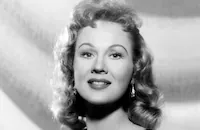
Virginia Mayo

Dorothy Malone

Henry Hull

John Archer
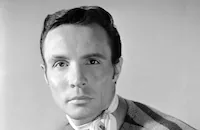
James Mitchell
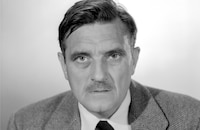
Morris Ankrum
Basil Ruysdael

Frank Puglia

Ian Wolfe
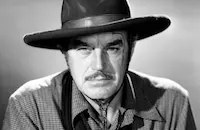
Harry Woods
Houseley Stevenson
Victor Kilian
Oliver Blake
Jack Montgomery
Artie Ortego
Glenn Thompson
Charles Horvath
Ben Corbett
Bert Dillard
Steve Stephens
Merlyn Nelson
Frosty Royce
Charles Miller
Carl Harbough
Hallene Hill
Paul Kruger
George Bell
Robert Filmer
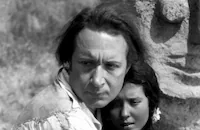
Monte Blue
Carl Andre
Harry Strang
Maudie Prickett
Jack Daley
Fred Kelsey
Gray Eyes
Crew
Eugene Busch
David Buttolph
Leslie G. Hewitt
Sid Hickox
H. F. Koenekamp
Fred M. Maclean
Owen Marks
William Mcgann
Edmund H. North
Maurice De Packh
Leah Rhodes
Russell Saunders
Ted Smith
John Twist
Anthony Veiller
Perc Westmore

Videos
Movie Clip



Trailer
Hosted Intro
Film Details
Technical Specs

Articles
Colorado Territory
In the years following World War II, Warner Bros. faced declining box-office grosses by reissuing some of its most popular films of the '30s and remaking others, often with a change in genre or setting. Errol Flynn's popular swashbucklers enjoyed a revival. The Public Enemy (1931) and Little Caesar (1930) were such a popular double bill that they brought back the gangster film for audiences tired of war stories. And the gangster drama The Petrified Forest (1936) was remade as the Nazi espionage thriller Escape in the Desert (1945), with Helmut Dantine's downed Nazi flyer taking the place of Bogie's doomed gangster.
Fortunately for film audiences, somebody got the brilliant idea of transforming High Sierra into a Western and hiring Walsh to re-make his classic gangster tale. The results were dynamic, with some contemporary critics insisting the story worked better in the Wild West than in the world of contemporary crime.
Joel McCrea was a natural for the role of an outlaw forced to pull one last heist before he can go straight. The actor radiated integrity, and whenever he played a character on the wrong side of the law, he automatically generated audience sympathy and moral complexity. Henry Hull, who had co-starred with Bogie in the original as a dying gangster, returned in a new role, as the father of the young beauty (Dorothy Malone) who betrays the outlaw.
Best of all, however, was Virginia Mayo as Colorado, the half-breed saloon singer. Ida Lupino had been tough as Bogart's moll in the original version, but Mayo was tougher, as she stood shotgun to shotgun by her man in the final shootout. Walsh was one of the few directors in Hollywood who saw Mayo's potential as a dramatic actress. Independent producer Samuel Goldwyn had brought her to Hollywood only a few years earlier to star in his lavish Technicolor musicals, usually as Danny Kaye's love interest. Director William Wyler had given a hint of her potential when he cast her as Dana Andrew's unfaithful wife in the postwar classic The Best Years of Our Lives (1946). But it was Walsh who gave her her best roles, first in Colorado Territory, then as James Cagney's murderous wife in White Heat the same year. The rare glimpses he provided of her usually wasted talents were as tragic as anything that happened to the characters in Colorado Territory.
Producer: Anthony Veiller
Director: Raoul Walsh
Screenplay: John Twist, Edmund H. North
Based on the screenplay for High Sierra by John Huston and W.R. Burnett and Burnett's novel (uncredited)
Cinematography: Sid Hickox
Art Direction: Ted Smith
Music: David Buttolph
Principal Cast: Joel McCrea (Wes McQueen), Virginia Mayo (Colorado Carson), Dorothy Malone (Julie Ann), Henry Hull (Winslow), John Archer (Reno Blake), James Mitchell (Duke Harris), Morris Ankrum (U.S. Marshall), Victor Kilian (Sheriff).
BW-95m. Closed captioning.
by Frank Miller

Colorado Territory
Virginia Mayo (1920-2005)
She was born Virginia Clara Jones in St. Louis, Missouri on November 30, 1920, and got her show business start at the age of six by enrolling in her aunt's School of Dramatic Expression. While still in her teens, she joined the nightclub circuit, and after paying her dues for a few years traveling across the country, she eventually caught the eye of movie mogul Samuel Goldwyn. He gave her a small role in her first film, starring future husband, Michael O'Shea, in Jack London (1943). She then received minor billing as a "Goldwyn Girl," in the Danny Kaye farce, Up In Arms (1944). Almost immediately, Goldwyn saw her natural movement, comfort and ease in front of the camera, and in just her fourth film, she landed a plumb lead opposite Bob Hope in The Princess and the Pirate (1944). She proved a hit with moviegoers, and her next two films would be with her most frequent leading man, Danny Kaye: Wonder Man (1945), and The Kid from Brooklyn (1946). Both films were big hits, and the chemistry between Mayo and Kaye - the classy, reserved blonde beauty clashing with the hyperactive clown - was surprisingly successful.
Mayo did make a brief break from light comedy, and gave a good performance as Dana Andrews' unfaithful wife, Marie, in the popular post-war drama, The Best Years of Their Lives (1946); but despite the good reviews, she was back with Kaye in The Secret Life of Walter Mitty (1947), and A Song Is Born (1948).
It wasn't until the following year that Mayo got the chance to sink her teeth into a meaty role. That film, White Heat (1949), and her role, as Cody Jarrett's (James Cagney) sluttish, conniving wife, Verna, is memorable for the sheer ruthlessness of her performance. Remember, it was Verna who shot Cody¿s mother in the back, and yet when Cody confronts her after he escapes from prison to exact revenge for her death, Verna effectively places the blame on Big Ed (Steve Cochran):
Verna: I can't tell you Cody!
Cody: Tell me!
Verna: Ed...he shot her in the back!!!
Critics and fans purred over the newfound versatility, yet strangely, she never found a part as juicy as Verna again. Her next film, with Cagney, The West Point Story (1950), was a pleasant enough musical; but her role as Lady Wellesley in Captain Horatio Hornblower R.N. (1951), co-starring Gregory Peck, was merely decorative; that of a burlesque queen attempting to earn a university degree in the gormless comedy, She¿s Working Her Way Through College (1952); and worst of all, the Biblical bomb, The Silver Chalice (1954) which was, incidentally, Paul Newman's film debut, and is a film he still derides as the worst of his career.
Realizing that her future in movies was slowing down, she turned to the supper club circuit in the 60s with her husband, Michael O'Shea, touring the country in such productions as No, No Nanette, Barefoot in the Park, Hello Dolly, and Butterflies Are Free. Like most performers who had outdistanced their glory days with the film industry, Mayo turned to television for the next two decades, appearing in such shows as Night Gallery, Police Story, Murder She Wrote, and Remington Steele. She even earned a recurring role in the short-lived NBC soap opera, Santa Barbara (1984-85), playing an aging hoofer named "Peaches DeLight." Mayo was married to O'Shea from 1947 until his death in 1973. She is survived by their daughter, Mary Johnston; and three grandsons.
by Michael T. Toole
Virginia Mayo (1920-2005)
Quotes
It reminds me of a little heist we planned in west Kansas about five or six years ago. One fella was smooth and slippery. The other was green and gabby. The third was just plain mean, from the top of his head to his boot heel. The next thing we know, there was a boxcar of soldiers coupled to that train. Too bad we never knew which one sent word to the soldiers. It would have been better for the other two if we had. Their monuments are right outside Boxville, Kansas. The prettiest little Bone Orchard you've ever seen. Little stone angels watching them.- Wes McQueen
Well, don't get any ideas you are through with us. You wouldn't last long cut off from the herd, McQueen. You're branded clean to the bone.- Pluthner
Trivia
Notes
The film's working title was North of the Rio Grande. According to a May 26, 1950 Los Angeles Herald Express news item, this was the first U.S. movie to be banned in West Germany, which deemed it "an example of gangster films which glorify anti-social elements." The film is a remake of the 1941 Warner Bros. film, High Sierra, written by John Huston and W. R. Burnett .

















